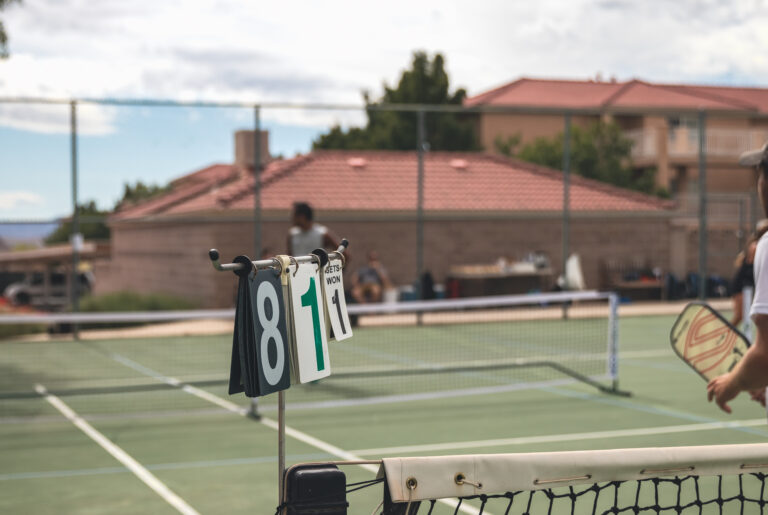Decoding World Pickleball Rankings: A Comprehensive Guide to Understanding the Global Ranking System
Pickleball has rapidly evolved from a backyard pastime to an internationally recognized sport, capturing the hearts of players of all ages and skill levels worldwide. With the increasing popularity of competitive pickleball tournaments, the need for an organized ranking system became evident. World Pickleball Rankings (WPR) were introduced to provide players, fans, and organizers with a comprehensive assessment of a player’s performance and standing in the global pickleball community. In this ultimate guide, we will delve into the intricacies of World Pickleball Rankings, its significance, how it works, and the factors that contribute to a player’s ranking.
What are World Pickleball Rankings (WPR)?
World Pickleball Rankings (WPR) is a system that assigns a numerical value to players based on their performance in sanctioned pickleball tournaments worldwide. The rankings offer an objective measure of a player’s standing in the global pickleball community1[The “global pickleball community” refers to the worldwide network of individuals who share a passion for playing and promoting the sport of pickleball.], taking into account results from various tournaments and events.
Significance of World Pickleball Rankings
World Pickleball Rankings hold immense significance for players, fans, and tournament organizers:
- Player Evaluation: WPR provides players with a clear assessment of their performance relative to others worldwide. It helps players gauge their progress, set realistic goals, and identify areas for improvement.
- Seeding in Tournaments: Tournament organizers often use WPR to determine seeding positions for players in competitive events. Higher-ranked players are generally seeded higher, which can influence the difficulty of their early-round matchups.
- Recognition and Prestige: A higher WPR reflects a player’s consistency and success on the global stage, leading to increased recognition and respect within the pickleball community.
- Enhanced Competition: WPR fosters healthy competition, as players strive to improve their rankings and earn higher standings.
How Do World Pickleball Rankings Work?
The calculation of World Pickleball Rankings involves a complex algorithm that considers various factors, including:
1. Tournament Tier: The tier or level of the tournament impacts the number of points players can earn. Higher-tier events offer more points for top performances.
2. Player’s Performance: WPR accounts for a player’s results in each tournament, taking into consideration the round reached, match wins, and losses.
3. Strength of Opponents: The rankings consider the level of opponents faced in each tournament. Defeating higher-ranked players yields more points than victories against lower-ranked players.
4. Recency of Results: Recent performances carry more weight in WPR calculation, as they better reflect a player’s current form.
5. Participation Frequency: Consistent participation in tournaments helps maintain and improve a player’s ranking.
Factors Contributing to a Player’s Ranking
To achieve a higher WPR, players should focus on the following aspects:
1. Tournament Participation: Regularly participating in sanctioned tournaments worldwide provides ample opportunities to earn points and improve rankings.
2. Tournament Selection: Strategically choosing tournaments based on their tier and the level of competition can optimize point accumulation.
3. Consistency: Consistent performance across multiple tournaments is crucial for climbing the rankings.
4. Success Against Strong Opponents: Winning matches against higher-ranked players significantly impacts a player’s WPR.
5. Continuous Improvement: Dedicated practice, skill development, and self-evaluation are essential for long-term improvement in rankings.
The Importance of Ranking Accuracy and Transparency
Accurate and transparent rankings are essential to the credibility of the World Pickleball Rankings system. To ensure fairness, it is crucial for the ranking calculation algorithm to be well-defined and publicly accessible. The pickleball community should have confidence in the integrity of the rankings, knowing that they are based on objective criteria and updated regularly.
Transparency also extends to the availability of rankings data. Providing a comprehensive list of player rankings, along with details of their tournament performances, allows players, fans, and organizers to track progress and make informed decisions. Open access to rankings fosters a sense of community engagement and encourages players to actively participate in tournaments.
Understanding Ranking Fluctuations
Player rankings can fluctuate based on various factors, including the results of recent tournaments and the performance of other players. It is essential for players to understand that rankings are not fixed but dynamic, subject to change based on their own performances and those of their competitors.
While ranking fluctuations are normal, players should not be discouraged by temporary drops. Instead, they should view rankings as a motivating force to continually improve and challenge themselves against tougher opponents.
The Role of Regional and National Rankings
Apart from the global World Pickleball Rankings, many countries and regions have their own ranking systems. National and regional rankings offer a more localized perspective and allow players to gauge their performance within a specific geographical area.
National and regional rankings can serve as a stepping stone for players aspiring to achieve higher ranks on the world stage. Success at the local level can lead to increased opportunities to participate in larger tournaments, ultimately impacting their global ranking.
Strategies to Improve Rankings
Players looking to improve their World Pickleball Rankings can adopt several strategies:
1. Set Clear Goals: Define specific ranking targets and work towards achieving them through consistent performance and dedication.
2. Tournament Selection: Choose tournaments wisely, considering their tier and the level of competition to maximize point accumulation.
3. Embrace Challenges: Challenge higher-ranked opponents to gain valuable points and experience. Even in defeat, playing against stronger players can lead to improvement.
4. Focus on Consistency: Consistent participation in tournaments and consistent performances are key to maintaining and improving rankings.
5. Balance Between Local and Global Tournaments: Strike a balance between participating in local tournaments to earn regional ranking points and competing in international events to secure global rankings.
The Future of World Pickleball Rankings
As pickleball continues to experience exponential growth and gain recognition as a competitive sport, the significance of World Pickleball Rankings is expected to grow further. The future of WPR holds exciting possibilities and potential advancements:
1. Global Expansion: With the sport’s popularity spreading to new regions and countries, the World Pickleball Rankings will likely encompass a more extensive and diverse pool of players. This expansion will offer a broader perspective of the sport’s global landscape.
2. Inclusion of More Tournaments: As the pickleball tournament calendar expands, the ranking system may include a wider range of events, allowing players to accumulate points from various tournament types and levels.
3. Enhanced Data Analytics: Advancements in data analytics and technology may lead to more sophisticated ranking algorithms, incorporating additional factors like the strength of the tournament field and the quality of wins.
4. Recognition of Age and Skill Categories: To cater to the diverse pickleball community, the rankings could potentially include separate categories for different age groups and skill levels, recognizing achievements within each category.
5. Collaboration with Professional Leagues: Collaboration with professional pickleball leagues and associations may lead to the integration of league results into the ranking system, further elevating the sport’s profile and providing players with increased opportunities to earn points.
6. Ranking Transparency and Accessibility: The continued emphasis on transparency will likely result in improved access to rankings data, allowing players and fans to track progress and understand the factors contributing to their positions.
7. Sponsorship and Incentives: As the rankings gain prominence, sponsorships and incentives for top-ranked players may increase, further motivating players to compete at the highest level and contribute to the sport’s growth.
Conclusion
World Pickleball Rankings have become an integral part of the competitive pickleball landscape, providing players with valuable insights into their performance and standing on the global stage. The rankings not only influence tournament seedings but also serve as a motivational force for players to strive for continuous improvement.
As the sport of pickleball continues to soar in popularity and expand its global reach, the significance of World Pickleball Rankings will only intensify. The rankings will continue to evolve, embracing technological advancements and incorporating additional data points to ensure accuracy, transparency, and fairness.
Players, fans, and organizers will look to the rankings as a benchmark of excellence, recognition, and achievement in the sport they are so passionate about. Ultimately, World Pickleball Rankings will play a pivotal role in fostering a thriving and dynamic pickleball community, uniting players from around the world and fueling the sport’s remarkable journey towards greater recognition and adoration on a global scale.







